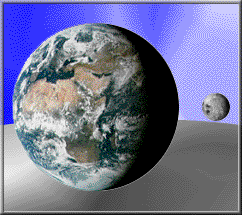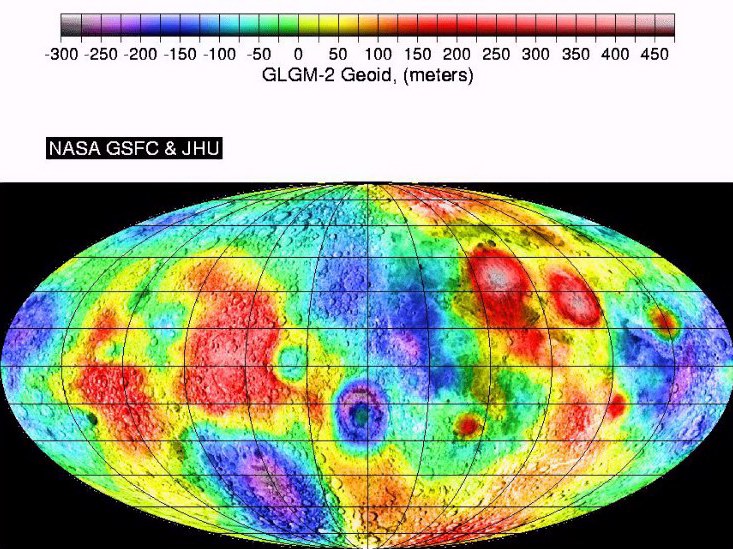www.moonlandings.co.uk
Moon Gravity | Far Side | Static Moon | Earth Facts | Top Ten Scientific Discoveries | Spinoffs | Landing Sites | The Future for the Moon | Water on the Moon? | Detailed Moon Statistics
Moon Gravity
Gravitation is a force that causes two objects to move towards each other. Gravity is what keeps our feet on the ground. The amount of gravity between two objects is proportional to their masses and the distance between them. Mass is the amount of matter that an object contains. Mass is not necessarily related to an object's size. For example, a brick has more mass (stuff in it) then a sponge of the same size. So, when we look at the amount of gravity between two objects we must look at the masses of the objects and the distance between them. The more mass an object has, the more gravitational force it will have. As two objects move apart the amount of gravity between them decreases.
To investigate the amount of gravity that the Moon exerts on an object, we relate the properties of the Moon to the Earth. When an object is on the Earth, we get the amount of gravity between the object and the Earth by examining the radius of the Earth (the distance between the object and the centre of the Earth) and the mass of the Earth. When we place the same object on the Moon, we find the gravity by examining the Moon's radius and the mass of the Moon. A ratio can be made between the gravity on the Moon and the gravity on Earth. When we compare the masses and radius of the Moon and Earth we find that the Earth has approximately six times more gravity than the Moon (an equation to prove this is as below). This means that objects are six times easier to lift on the Moon. A person could throw an object six times higher on the Moon than on the Earth.
You have probably seen television clips of astronauts bouncing around on the moon. How can they do that? What does a 100 kg astronaut weigh on the moon? What is the acceleration of gravity on the moon?
They can do it because the force exerted on them by gravity (ie their weight) on the moon is much smaller than it is on Earth
On Earth: W = F gravity = mg = (100 kg) x (9.8 m/s 2 ) = 980 N

This gives W moon = 162 N
This is a factor of 980/162 = 6 ( ie one-sixth smaller than gravity on Earth)
The acceleration of gravity on the Moon is then g moon = W moon /m = 1.62 m/s 2
This diagram below illustrates the different amounts of gravitation on the Moon and on the Earth. The sizes of the Earth and Moon show the amount of gravity they will exert on the same object. The Earth will exert six times more gravity; therefore, it is six times larger.
Note: This diagram compares gravity, not size or mass. When we compare the radii of the Moon and Earth we find that the Earth's radius is 3.66 times the radius of the Moon. Comparing masses reveals the Earth's mass is 81.25 times the mass of the Moon.

A gravity map of the moon, courtesy of CDDISA, NASA. Red areas show location of the Mascons (Mass Concentrations) - unexplained areas of higher gravity which cause spacecraft orbiting the moon to 'dip' towards the surface.
